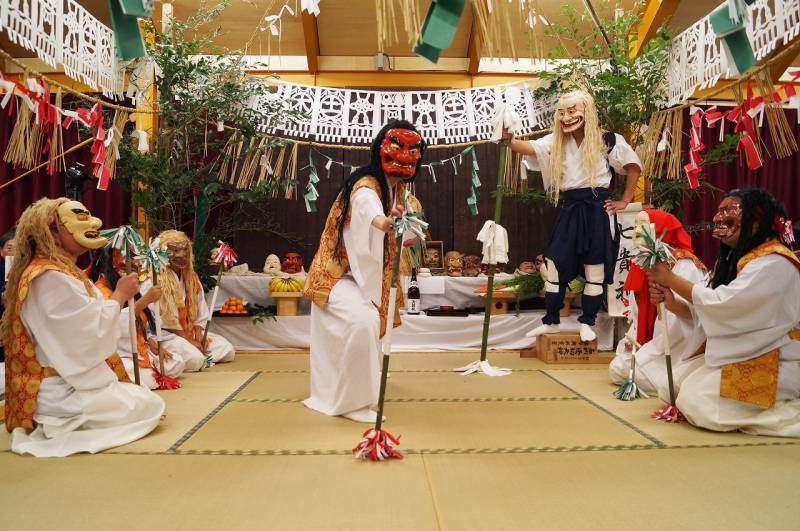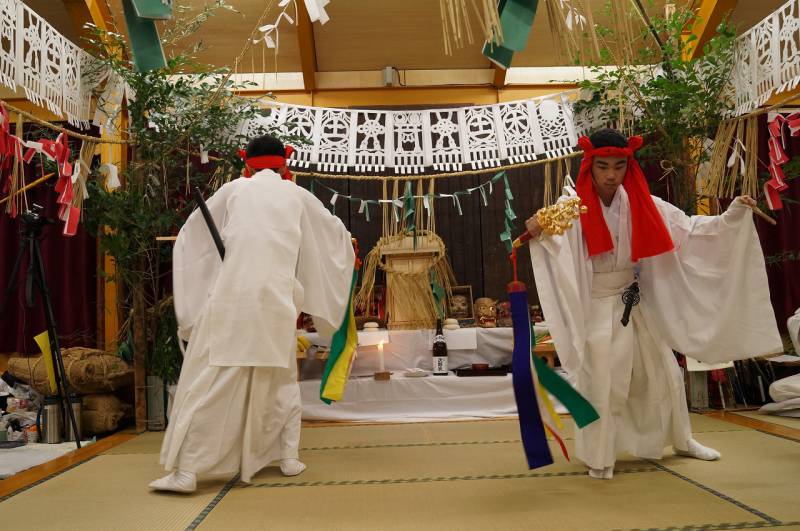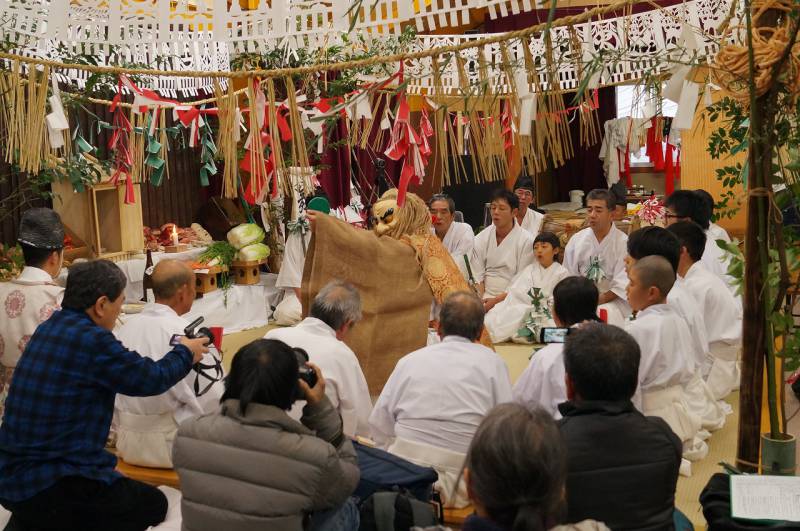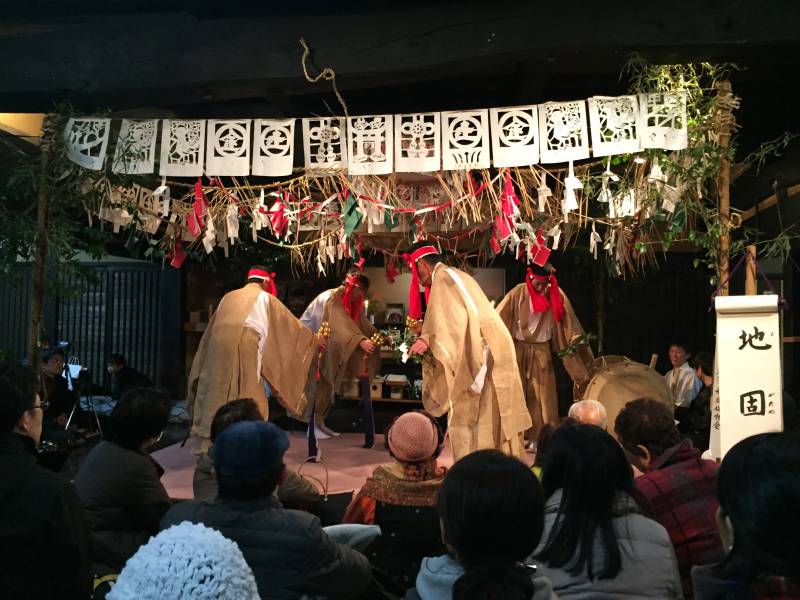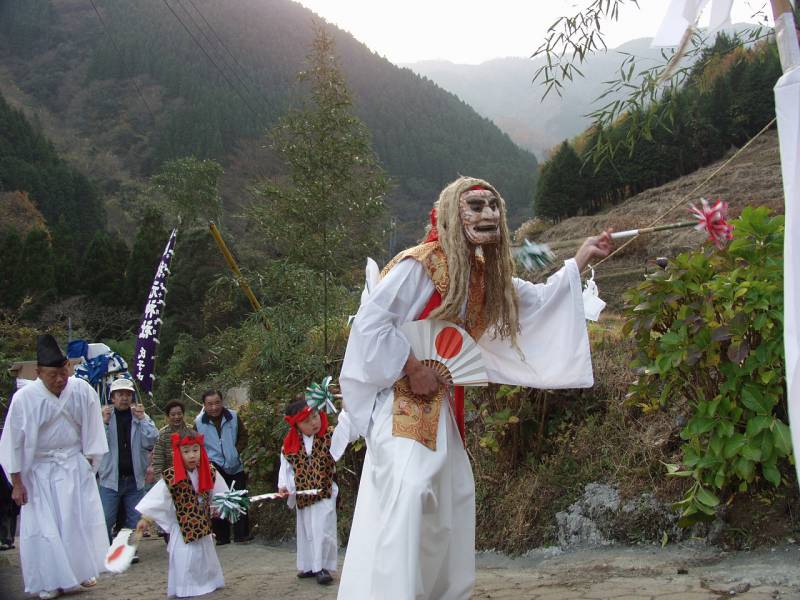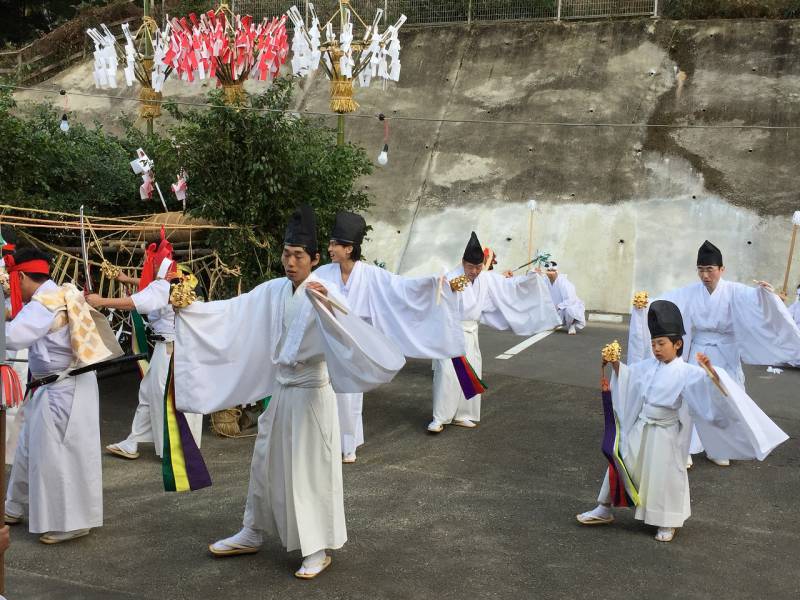2019 / 07 / 09
Yokagura
Yokagura at Takachiho
Yokagura at Takachiho
When the winter months roll in and most cities tuck in to brace for the cold, Takachiho’s residents are instead in the midst of planning for a local custom that traces back well over eight hundred years: yokagura, nighttime kagura.
Yokagura is a Shinto ritual in the form of a theatrical dance that is performed in as many as twenty villages in the Takachiho region between the months of November and February. From dusk until dawn, kagura performers called hosha enact thirty-three highly specialized performances dedicated to local earth kami deities, to give thanks after the harvest and to pray for bountiful fields the following year.
For the people of Takachiho, this is a sacred ceremony that brings humans and kami deities together for a night of merriment. Accompanied by taiko drums, ringing bells, and rhythmic singing, the masked hosha performers serve as vessels for deities. Neighbors gather to watch, eat, and drink in the presence of these various mythical deities as they turn and shift in intricate patterns on the sacred kagura stage. During this ceremony, even visitors are considered kindred.
This custom has strong ties to local culture. The various communities in the Takachiho area each have their own kagura specialties, leading to differences small and large in the style and order of performances as well as the costumes, decorations, and audience etiquette. Takachiho Yokagura was designated a significant intangible folk cultural asset of Japan in 1978.
Yokagura is a Shinto ritual in the form of a theatrical dance that is performed in as many as twenty villages in the Takachiho region between the months of November and February. From dusk until dawn, kagura performers called hosha enact thirty-three highly specialized performances dedicated to local earth kami deities, to give thanks after the harvest and to pray for bountiful fields the following year.
For the people of Takachiho, this is a sacred ceremony that brings humans and kami deities together for a night of merriment. Accompanied by taiko drums, ringing bells, and rhythmic singing, the masked hosha performers serve as vessels for deities. Neighbors gather to watch, eat, and drink in the presence of these various mythical deities as they turn and shift in intricate patterns on the sacred kagura stage. During this ceremony, even visitors are considered kindred.
This custom has strong ties to local culture. The various communities in the Takachiho area each have their own kagura specialties, leading to differences small and large in the style and order of performances as well as the costumes, decorations, and audience etiquette. Takachiho Yokagura was designated a significant intangible folk cultural asset of Japan in 1978.
Kagura Performers (Hosha)
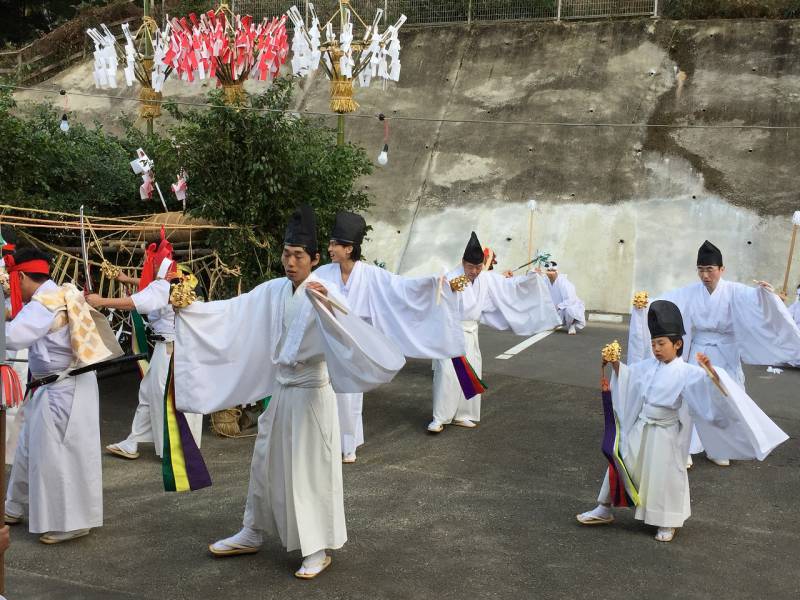
In the Takachiho region, those who train and perform kagura are referred to as hosha. They often begin training when they are young, around elementary school age, and are instructed by a local kagura master. When they are not performing, hosha are members of the community with various professions.
In the past, hosha roles were restricted to the eldest sons of important local families. This is because, in Japanese custom, eldest sons were often the inheritors of businesses and estates. Recently, however, there has been an increase in hosha from various backgrounds, including some performers who moved to the area from other regions.
In the past, hosha roles were restricted to the eldest sons of important local families. This is because, in Japanese custom, eldest sons were often the inheritors of businesses and estates. Recently, however, there has been an increase in hosha from various backgrounds, including some performers who moved to the area from other regions.
Kagura Stage (Koniwa)
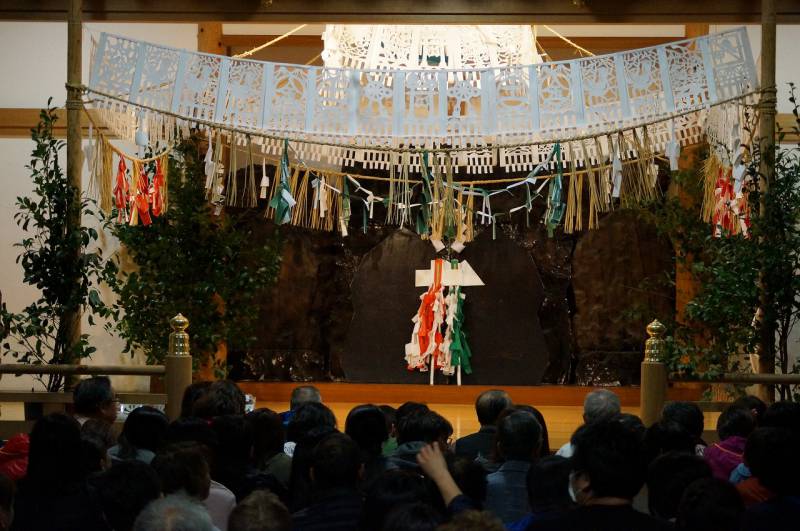
The koniwa is the sacred space where the kami deities are invited to descend on the night of a yokagura performance. No one except the hosha performers may enter. Traditionally, the koniwa is established in the home of an elected host, so its location may change from year to year. Recently, some groups have begun using community centers.
Masks (Omote-sama)
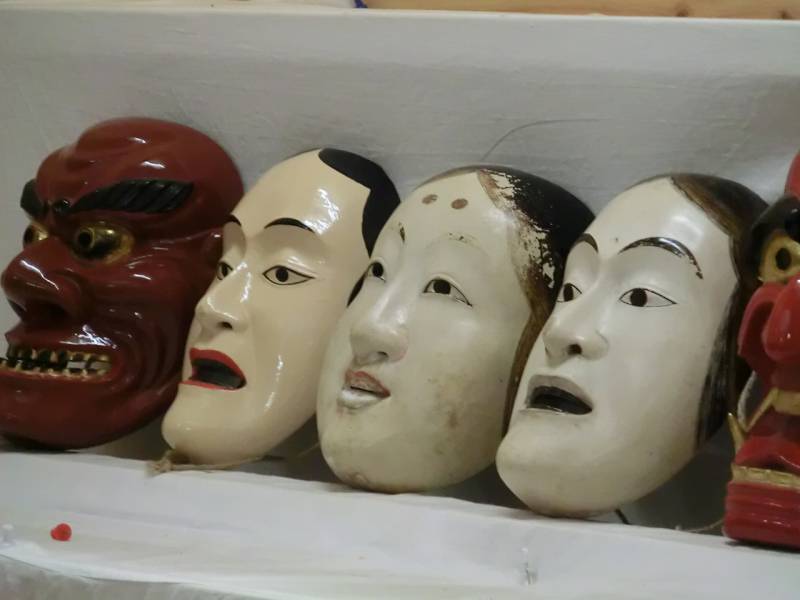
The masks used in kagura are called omote-sama. They are revered as an embodiment of the kami deities themselves and are treated with the utmost respect. Each omote-sama has its own expression and history, and some are said to date back to the beginning of the kagura custom over eight hundred years ago.
Kagura Paper Decorations (Erimono)
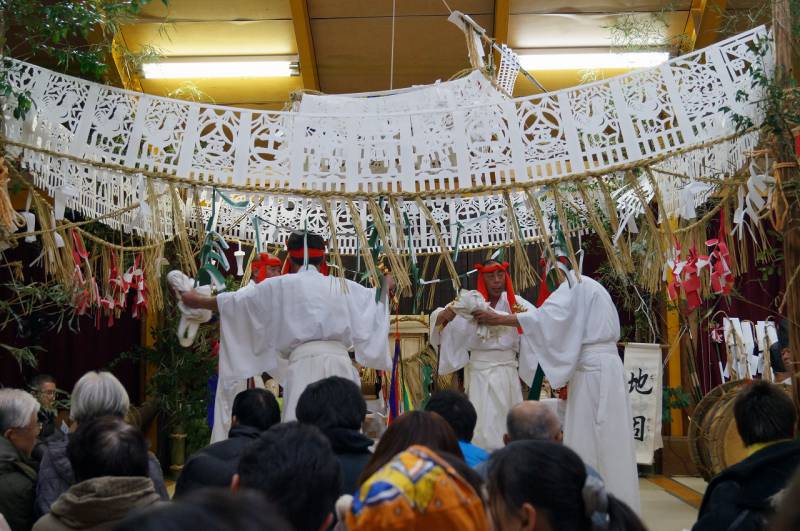
Paper is used in a number of Shinto rituals. For the kagura, special Japanese paper is cut into various designs called erimono to fence off and adorn the koniwa kagura stage. Each local area uses different numbers and decoration styles of erimono, all with distinct meanings.
Kagura Performances
Yokagura consists of various combinations of thirty-three acts through a whole night. In these performances, kami deities from various legends make appearances. These deities have a wide array of temperaments, appearances, and skills, and sometimes they may interact with the audience up close should they feel inclined. There are eighteen to twenty main villages that hold kagura in the Takachiho area. Performance length, style, rhythm, and order, as well as costume and decorations, can differ depending on the village. Takachiho is particularly known for its yokagura performance of the Amano Iwato (Heavenly Stone Cave) myth at dawn. This performance coordinates the sun kami deity Amaterasu Omikami’s emergence from her cave with the exact time the sun actually rises. It also includes a dance from the kami deity believed to have founded kagura, Ame no Uzume no Mikoto.
Yokagura Etiquette
Yokagura etiquette differs by area. In many regions, residents are encouraged to eat and drink, and the deities may partake of refreshments with them. While onlookers are strictly prohibited from entering the koniwa kagura stage, kami may venture out to interact with the crowd. In Takachiho, it is customary to offer special cuisine such as kagura udon noodles, simmered food called nishime, and sake warmed and served in bamboo called kappo zake. There are certainly many things to be respected when attending yokagura, but most important is respect for one’s neighbors and the community spirit.


